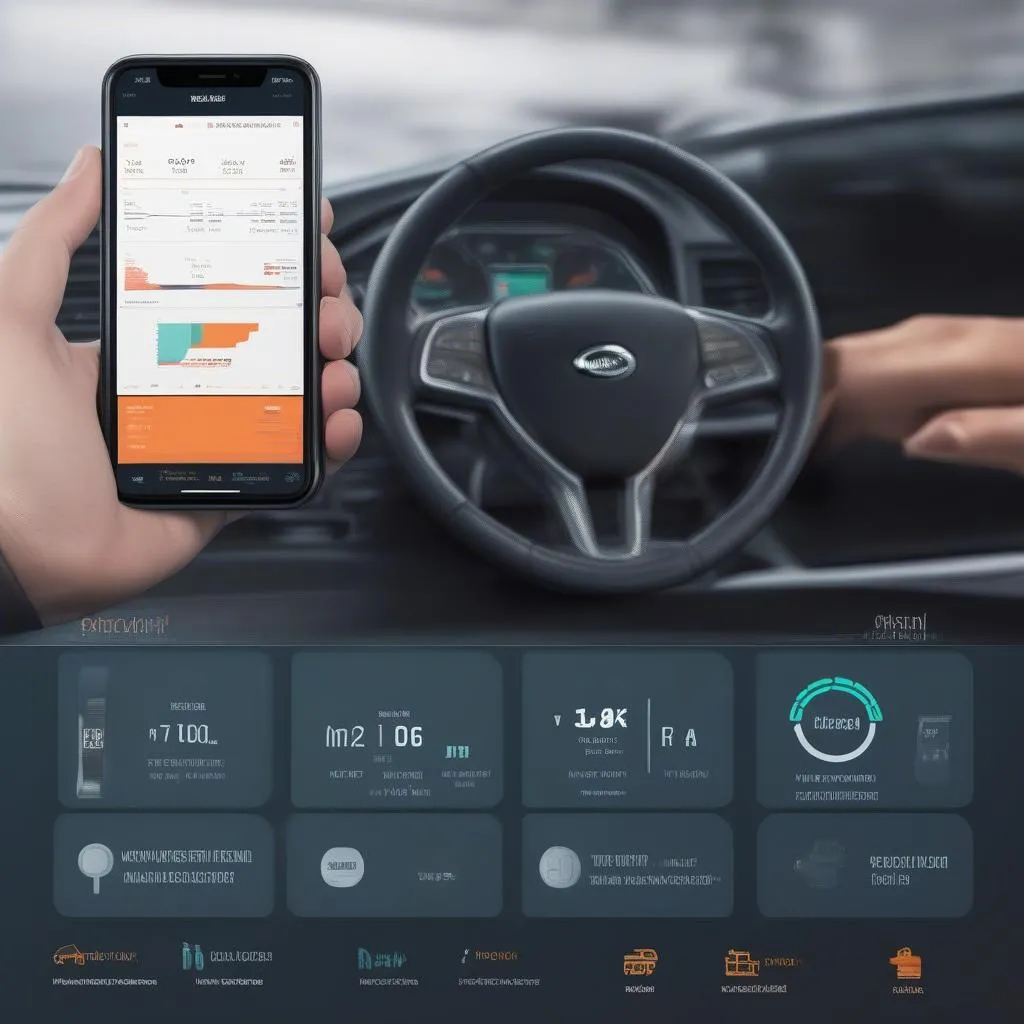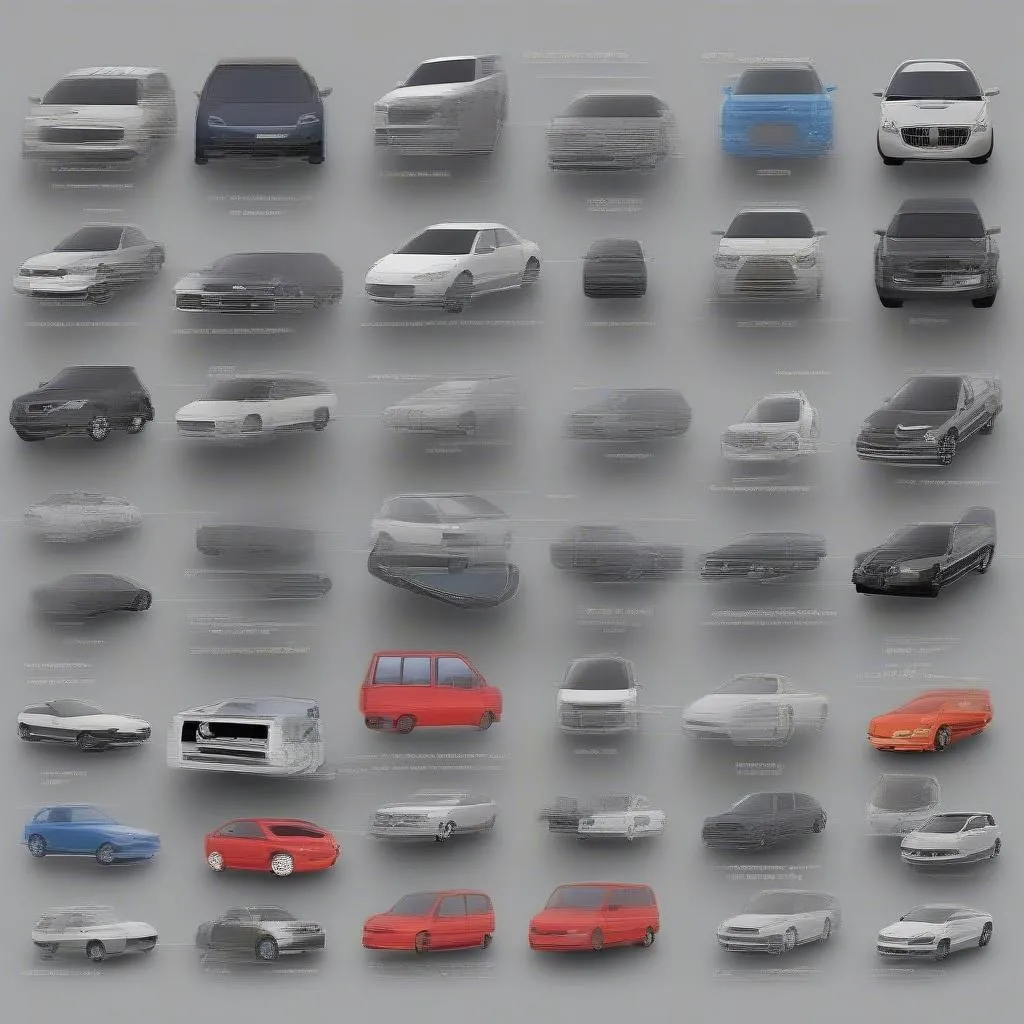Have you ever stared at your car’s dashboard, a confusing array of lights blinking back at you, and felt completely lost? You’re not alone. Modern vehicles are complex machines, and understanding what’s going on under the hood often requires more than just a visual inspection. That’s where scan tools, also known as OBD2 scanners, come in. These handy devices act as translators between your car’s computer and you, providing valuable insights into its inner workings. But the real question is, How To Read Scan Tool Data effectively?
This comprehensive guide will equip you with the knowledge to decipher those cryptic codes and make sense of your car’s diagnostics. Whether you’re a DIY enthusiast looking to troubleshoot a check engine light or a seasoned mechanic seeking advanced insights, understanding scan tool data is essential for maintaining your vehicle’s health and performance.
Decoding the Language of Your Car
Let’s face it; cars can be quite chatty, but they speak a language most of us don’t understand. That’s where scan tools come in. Imagine this: you’re driving down a California highway, and suddenly, your check engine light pops up. You pull over, a little panicked, wondering what could be wrong. You connect your trusty scan tool, and it spits out a code: P0420. Now what?
What Does “How to Read Scan Tool Data” Really Mean?
“How to read scan tool data” is more than just deciphering codes; it’s about understanding the story behind them. It’s about connecting the dots between a cryptic code like “P0420,” which indicates a potential catalytic converter issue, and the symptoms your car might be exhibiting.
For a car owner, it means being able to:
- Identify the severity of a problem.
- Decide whether it’s a quick fix or requires a trip to the mechanic.
- Potentially save money by understanding the issue beforehand.
For mechanics, it’s their bread and butter:
- Quickly diagnosing problems.
- Providing accurate repair estimates.
- Ensuring the vehicle is running smoothly and safely.
From a technical standpoint:
- Scan tool data provides real-time information about various systems, from engine performance to emissions.
- It offers insight into sensor readings, fuel trim levels, and other crucial parameters.
Economically speaking:
- Early detection through scan tools can prevent minor issues from escalating into costly repairs.
- It empowers car owners to make informed decisions about maintenance and repairs.
Unraveling the Mysteries of Scan Tool Data
1. Diagnostic Trouble Codes (DTCs): These are the bread and butter of scan tool data. DTCs are alphanumeric codes that pinpoint specific areas within your car’s systems where a fault is detected. They’re standardized, meaning a P0420 code means the same thing on a Toyota Camry as it does on a Ford F-150.
2. Freeze Frame Data: Think of this as a snapshot of your car’s vital signs at the moment a fault code was triggered. Freeze frame data captures parameters like engine speed, coolant temperature, and vehicle speed, providing context to the DTC.
3. Live Data Stream: This is where things get exciting. Live data provides real-time information on various sensors and systems, allowing you to monitor how your car performs as you drive. It’s like having x-ray vision into your vehicle’s nervous system.
4. Mode 6 Data: This is the deep dive into your car’s self-diagnostic results. It provides information on the health of various emissions-related components and systems.
 Scan Tool Interface
Scan Tool Interface
Putting It All Together: A Case Study
Let’s revisit our P0420 scenario. Armed with your scan tool knowledge, you now know this code points to a potential catalytic converter issue. You check the freeze frame data and notice the engine was running hot when the code was triggered. You then dive into the live data stream and monitor the oxygen sensor readings before and after the catalytic converter. This information, combined with your knowledge of how the system works, helps you determine the severity of the issue and decide on the best course of action.
Common Scan Tool Data Questions Answered:
Q: What does a pending code mean?
A: A pending code is like an early warning system. It indicates a potential problem that hasn’t yet met all the criteria to trigger a full-blown DTC.
Q: Can I clear a code myself?
A: Yes, most scan tools allow you to clear codes. However, this is only a temporary solution. If the underlying problem isn’t addressed, the code will likely return.
Q: What’s the difference between generic and manufacturer-specific codes?
A: Generic codes are standardized across all makes and models, while manufacturer-specific codes provide more detailed information related to a particular brand or vehicle system.
Mastering the Art of Diagnostics
Learning how to read scan tool data is an ongoing journey. It’s about combining technical knowledge with practical experience. Here are some tips for navigating the world of automotive diagnostics:
- Invest in a quality scan tool: A good scan tool is worth its weight in gold. Look for one that’s user-friendly, offers comprehensive data, and is compatible with your vehicle.
- Consult reputable resources: The internet is awash in automotive information, but not all of it is accurate. Stick to trusted sources like manufacturer websites, reputable forums, and automotive repair manuals.
- Don’t be afraid to ask for help: Even seasoned mechanics rely on colleagues and online communities for support. If you’re stuck on a particularly tricky diagnosis, don’t hesitate to seek assistance.
 Types of Scan Tools
Types of Scan Tools
Beyond the Codes: The Bigger Picture
While scan tools are powerful diagnostic tools, they’re just one piece of the puzzle. Effective automotive troubleshooting involves:
- Thorough visual inspections: Sometimes, the solution is staring you right in the face.
- Understanding your car’s history: Regular maintenance records can provide valuable clues.
- Trusting your instincts: If something doesn’t feel right, it probably isn’t.
Unlock the Secrets of Your Car’s Health
Learning how to read scan tool data is an investment in your car’s well-being and your peace of mind. It empowers you to take control of your vehicle’s maintenance, troubleshoot problems effectively, and make informed decisions about repairs.
Ready to take your diagnostic skills to the next level? Check out these related articles:
- Understanding OBD1 Scan Tool Live Data
- A Deep Dive into Freeze Frame Data
- Finding the Right Scan Tool for Your OBD2 Vehicle
Need help with Diagnostics Tool Installation or have any automotive questions? Our team of experts is here to assist you 24/7. Contact us via WhatsApp at +84767531508.


